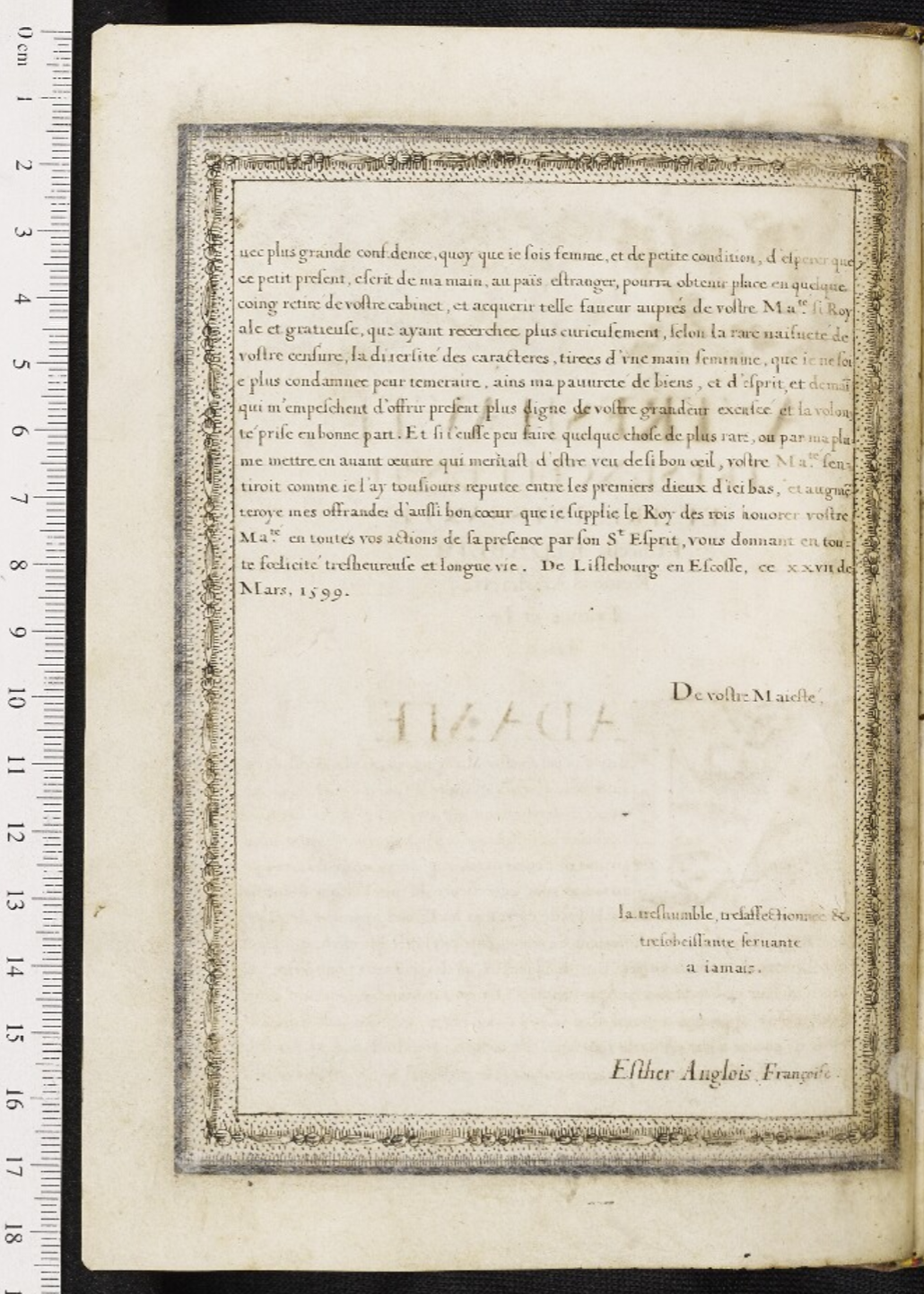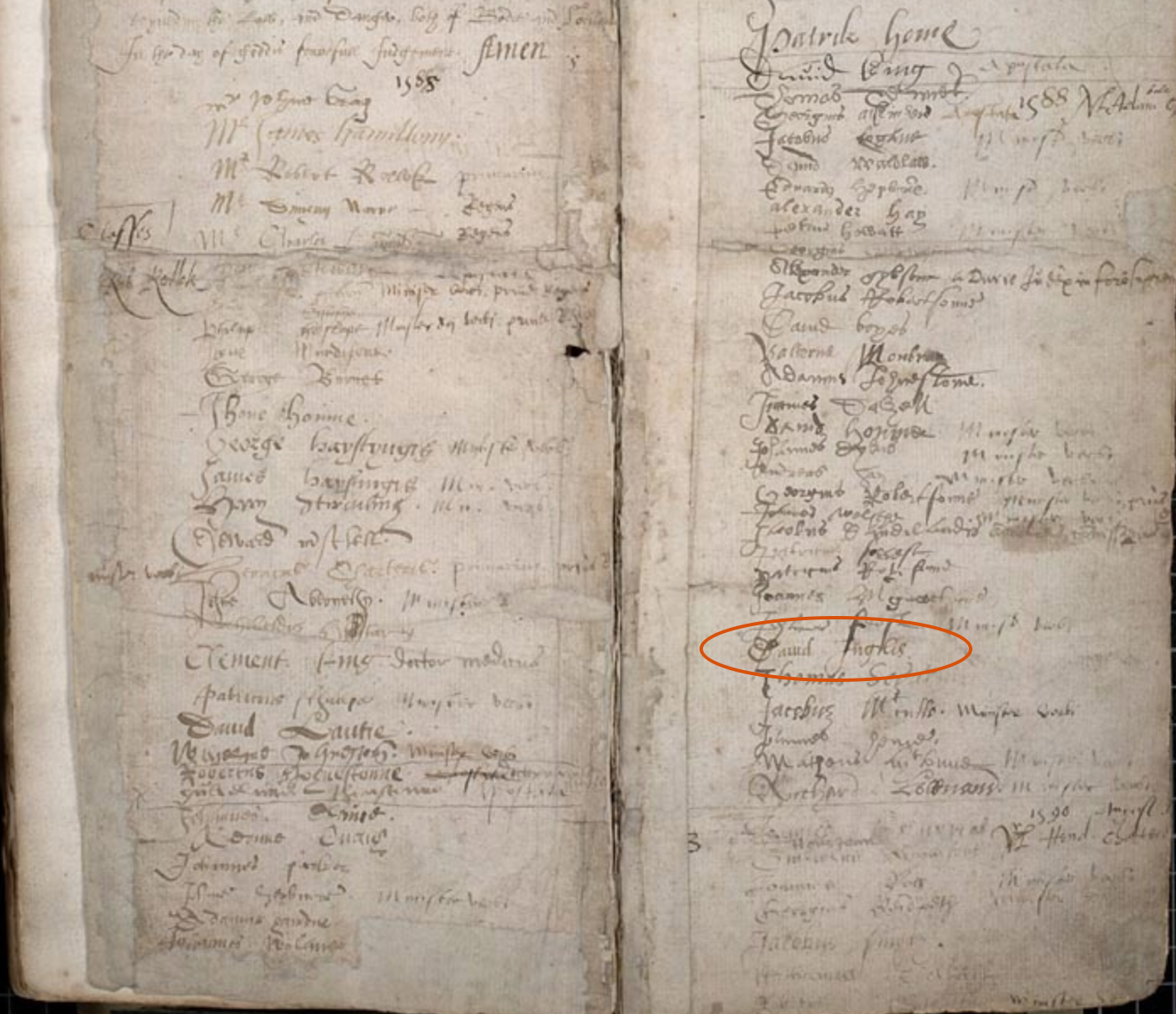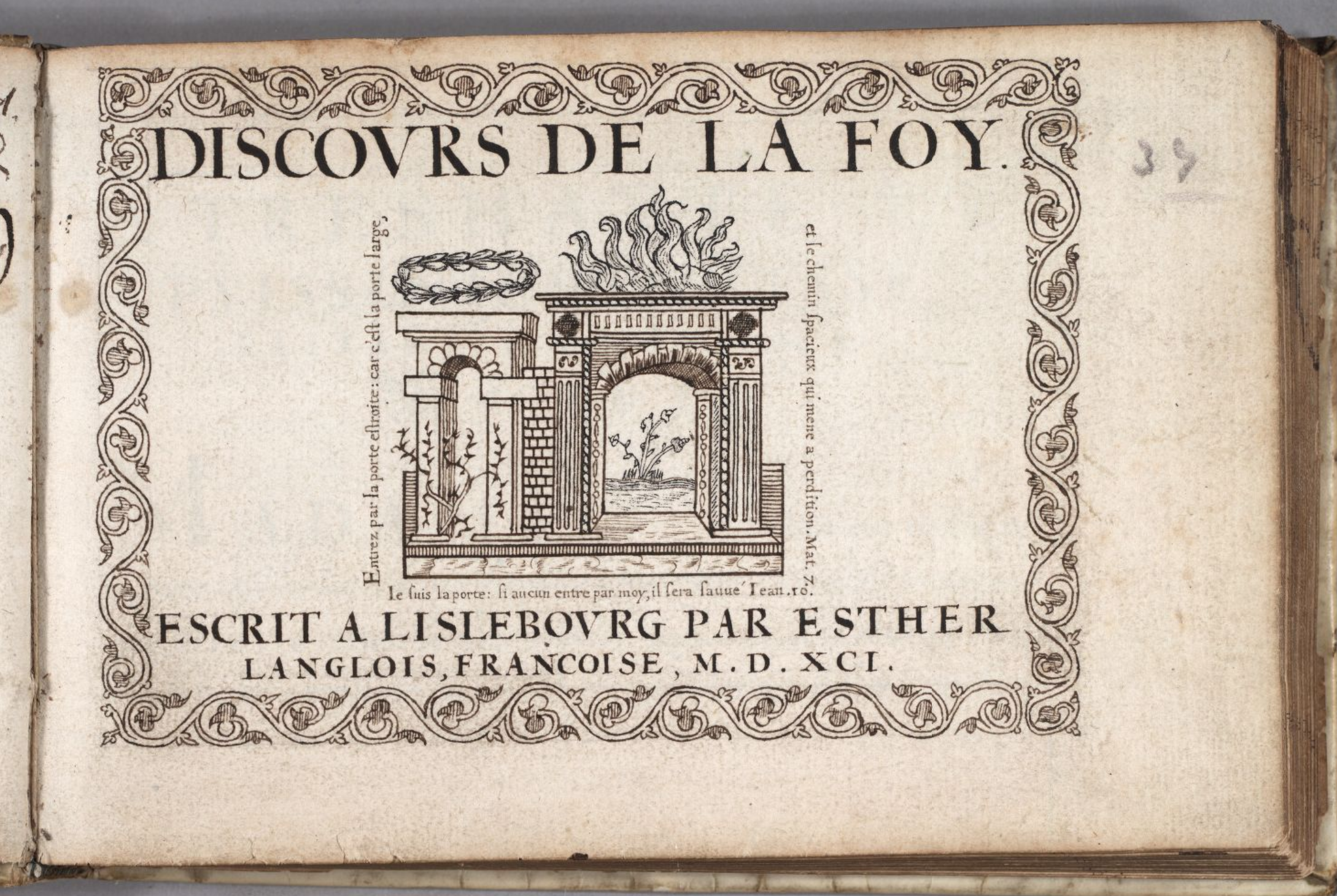This post explores in further detail the connections between Esther Inglis (c.1570-1624), her family, and the city and University of Edinburgh. This post is written by the project curator, Anna-Nadine Pike, with reference to unpublished research provided by Dr Jamie Reid Baxter (University of Glasgow).
Esther Inglis died on 30th August 1624. Her will, now held in the National Records of Scotland, is dated to the 11th March 1625; it records her death, and describes Inglis as “sometime spouse to Bartilmo Kello, indweller in Leith”. Four hundred years later, 2024 offers a milestone anniversary in which to celebrate and share the work of this unparalleled calligrapher, who deserves far greater recognition within and beyond the city in which so many of her manuscripts were produced. The city of Edinburgh itself plays a significant part in Esther Inglis’ life and manuscripts. From their first arrival in the city as Huguenot refugees, Inglis and her family were immersed in the urban landscape and networks of early modern Edinburgh. In September 1574, as Jamie Reid Baxter has discussed, Inglis’ father Nicolas Langlois became master of the French School in Edinburgh. From the 11th November that year, this post afforded accommodation for him and his family in a house “at the New Well”, owned by Alexander Udwart, close to the modern Guthrie Street which connects Chambers Street to Cowgate. The Burgh Records of Edinburgh for July 1580 note the payment “to Alexander Vddert £10” by the Council, to account for “the hous and schole of the maister of the Frainsche schole, Nicolas Anglois”. The Langlois family had early links with other high-ranking individuals in Edinburgh, including David Lindsay, the minister of Leith, who provided early assistance to Nicolas and Marie Presot on their arrival in the capital.
Esther Inglis’ further integration into the political and social networks of Edinburgh must have followed her marriage to the Scottish clerk Bartilmo Kello, who was a servitor to his kinsmen Bishop Adam Bothwell and his son John, Lord Holyroodhouse. Several of Inglis’ surviving manuscripts are dedicated to members of the Scottish nobility; in 1602, she presents an intricate copy of the books of Ecclesiastes and Lamentations in French to Archibald Campbell, 7th Earl of Argyll (1575-1638). In a flattering dedication, she describes the many “rares vertus desquelles Dieu et nature se sont forcez d’orner vostre Seigneurie par dessus les autres Princes de vostre aage” [rare virtues with which God and nature have been compelled to adorn your Lordship, above the other Princes of your age]. At least four manuscripts were presented to Scottish men and women in the year 1616 alone: to Robert Frenche, Clerk of Kircaldy, the Archbishop of St Andrews John Spottiswood, to Robert Boyd of Trochrig, and to Boyd’s wife, Anna Maliverne de Lavignolle. The dedicatory letters which Esther Inglis writes, mostly in French, between 1599 and 1602, and again from 1616, are often signed “a Lislebourg” [at Edinburgh] or “de Lislebourg en Ecosse” [from Edinburgh in Scotland]. In this way, her books emphasise their Scottish production, while also retaining Esther Inglis’ own identity as a Frenchwoman who lives and works “en Ecosse”.

Beyond Inglis’ connections with the city of Edinburgh, however, there is a further significance to “Esther Inglis 2024” taking place within this University. The University of Edinburgh was founded as Tounis College in 1582, opening in 1583, and initially offered just one four-year course, the Master of Arts. The first principal of the University was Robert Rollock (1555-1599), and from August 1587 the graduations of the college began to be recorded. In 1588, one of these graduates was David Inglis, Esther Inglis’ elder brother. It is likely that this is the same “David Inglis” who, in 1588, adds his signature to the First Laureation Album held in the University’s archives.

Robert Rollock is also one of several Scottish individuals who composes neo-Latin verses in praise of Esther Inglis’ calligraphy; Inglis copies such laudatory verses by Rollock into her manuscripts between 1599 and 1606, and again in 1624. One such example is this four-line verse, included in Inglis’ 1599 Book of Psalms for Queen Elizabeth I. Rollock compares Inglis to the classical Greek artist Apelles who was famed for his ability to paint the finest line possible:
Egregiam peperit laudem sibi pictor Apelles
Caelatur Calamis arte etiam meruit
Tu calamo Calamin superas pictura et Apellem
Psalmographi pingens Davidis Ester opus.
[The painter Apelles won great praise for himself
It is engraved that, by the art of the pen, he also deserved it
You, Esther, by the pen surpass the pen, and surpass Apelles in depiction
Depicting the work of the psalm-writer David.]

Robert Rollock writes further epigrammatic verses which are dedicated to the specific recipients of some of Inglis’ manuscripts; he writes a verse in praise of Robert Earl of Essex to be included in the Book of Proverbs which Inglis dedicates to Essex in 1599. He also writes a verse for Elizabeth I, for Inglis’ 1599 Psalms, and another for Anthony Bacon, the dedicatee of Inglis’ copy of Ecclesiastes and the Song of Songs, also in 1599.
Even prior to his offering of these verses, however, Robert Rollock seems to have have established a yet closer relationship with both Inglis and Kello. This is suggested by his appointment as a witness to the baptism of Samuel Kello on the 13th March 1596 — a role which, Jamie Reid Baxter notes, is equivalent to a godfather. Samuel was baptised with his twin sister, Agnes, about whom, sadly, nothing else is presently known.
Samuel Kello is later seen to have followed in the footsteps of his uncle, David Inglis, in attending Edinburgh’s Tounis College. He matriculated at the University in 1615, and in 1617 is described as Academiae Edinburgensis Alumno on the title-page of a printed collection of poems which he authored and dedicated to James VI/I. The shortened title of this volume is Carmen gratulatorium [a song of congratulations], published by the Edinburgh printer Andro Hart.
The University of Edinburgh, then can be seen as a truly fitting place in which to celebrate the manuscripts and life of Esther Inglis, and the circles in which she moved. The newly-founded University played an important part in the lives of Inglis’ relations, soon after their arrival in the city. The Inglis-Kello family later establish a lasting connection with Robert Rollock, its first principle, whose personalised verses seem to integrate Inglis’ calligraphic manuscripts into his own early-modern scholarly network. The city of Edinburgh itself is woven into the impression of authorial identity which is found in Esther Inglis’ early manuscripts, and becomes a place to which she returns in later life. Four hundred years later, the University of Edinburgh is working to ensure that the impression which Esther Inglis and her family left upon this city in the sixteenth and seventeenth centuries is not forgotten.
